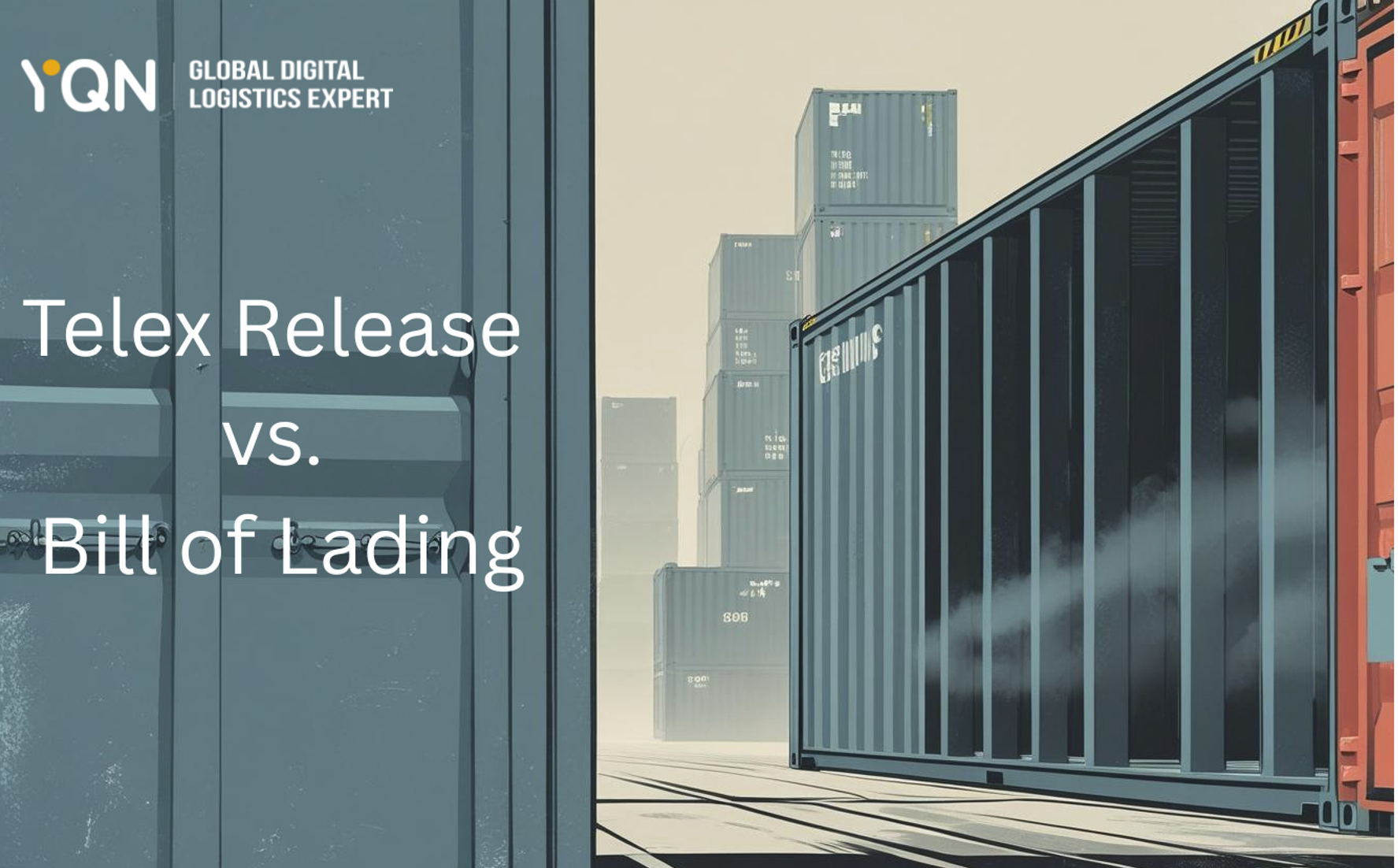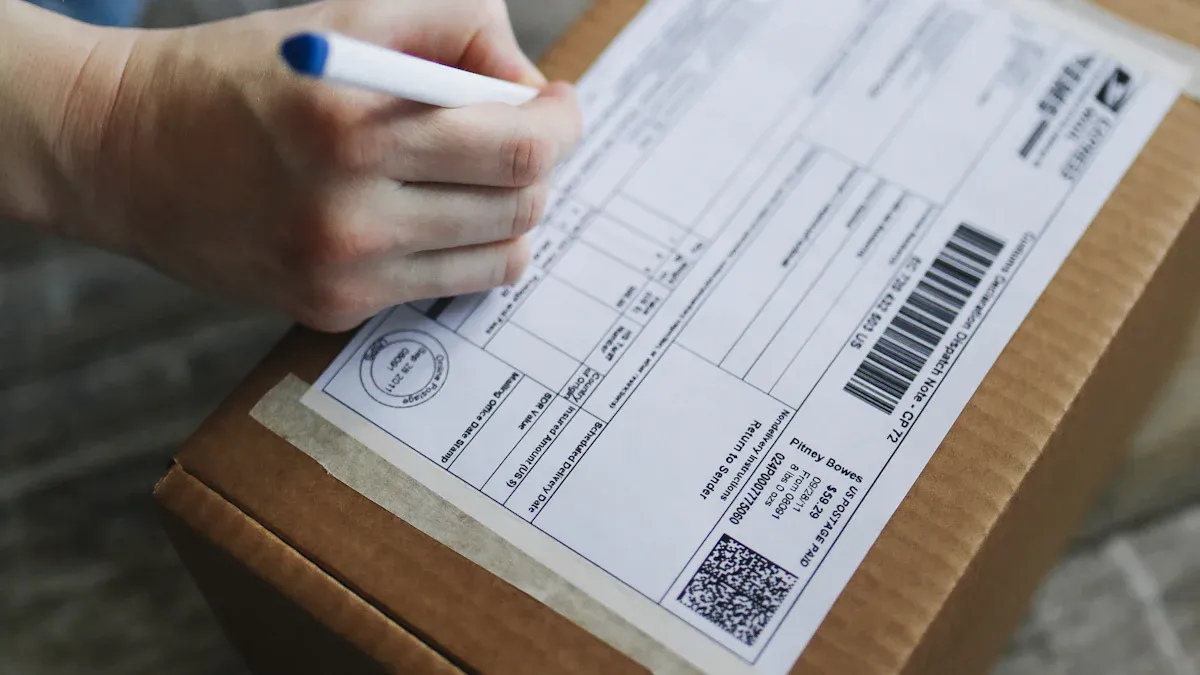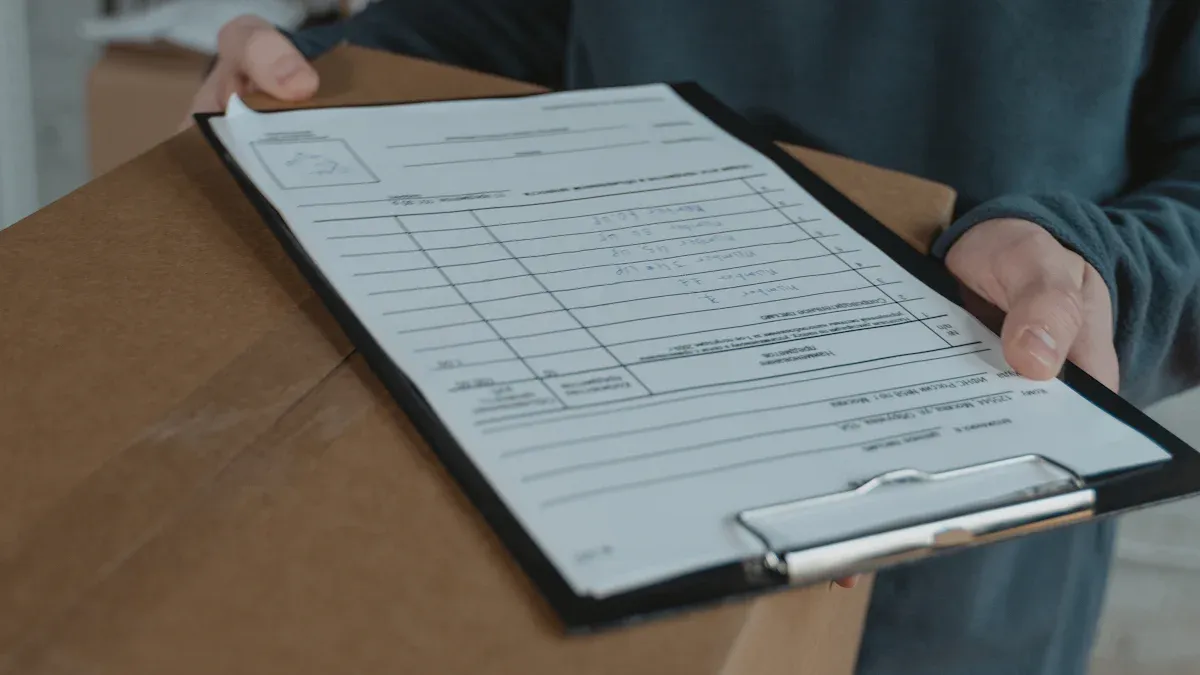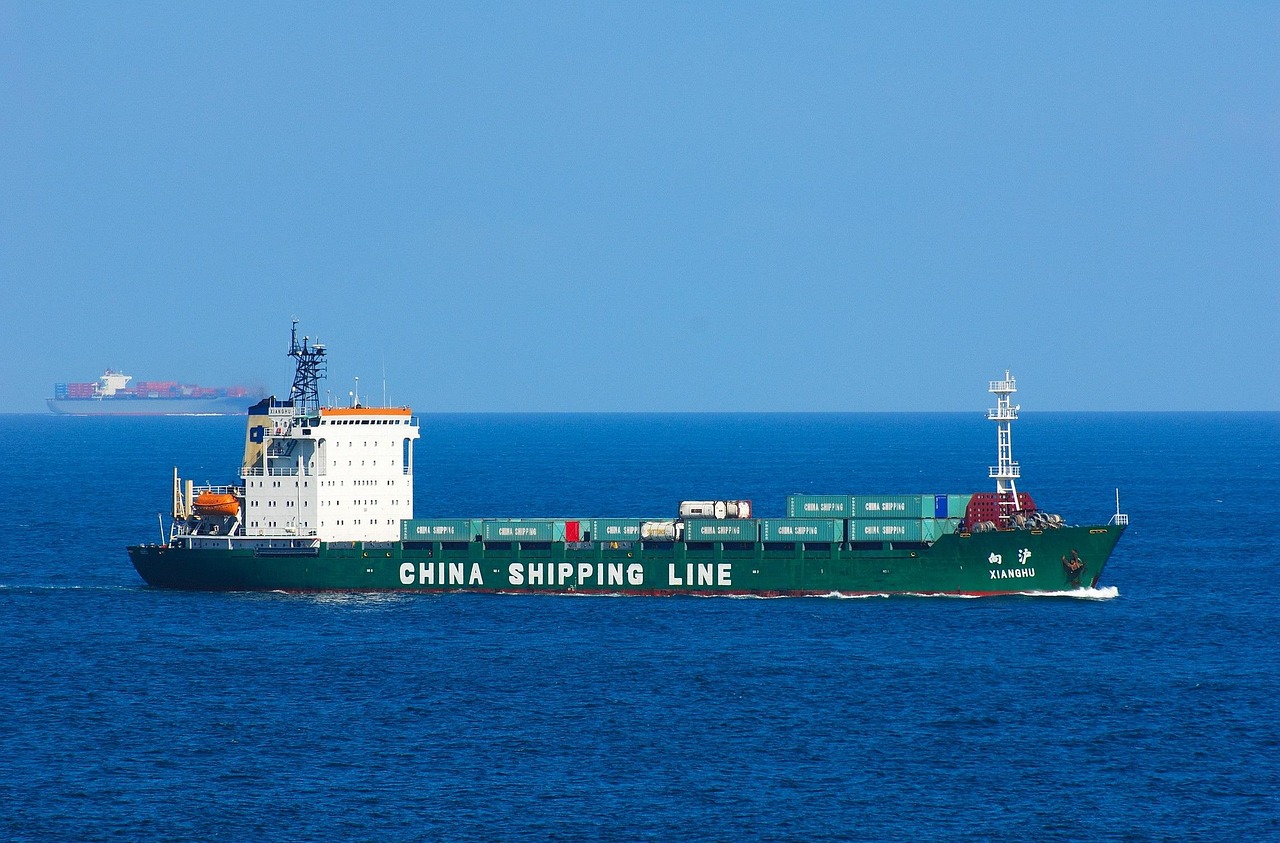Telex Release vs. Bill of Lading: Key Differences Explained

You often face decisions when shipping cargo. A Telex Release lets you release goods quickly without physical paperwork. It uses a digital process that speeds up transactions. On the other hand, the bill of lading acts as a physical proof of ownership and a shipping contract. Choosing between these depends on your priorities, whether speed or security.
Telex Release Meaning

What is a Telex Release?
A Telex release is a digital method used in international shipping to authorize the release of cargo without requiring physical documents. It eliminates the need for an B/L, allowing you to retrieve goods faster. This solution is widely adopted in the shipping industry due to its efficiency and convenience.
With a telex bl release, the shipping line sends electronic instructions to the destination port, confirming that the cargo can be released to the consignee. This process speeds up transactions and reduces the risk of delays caused by lost or misplaced paperwork.
How Does the Telex Release Process Work?
The telex release of bill of lading process begins when the shipper surrenders the original Bill of Lading to the carrier at the origin port. Once verified, the carrier sends a digital message—often referred to as a "telex"—to the destination port, authorizing the release of the cargo.
This streamlined approach offers several advantages:
Reduces shipping costs by eliminating courier fees for physical documents.
Builds trust among parties by ensuring secure and efficient communication.
For you, this means faster access to your cargo and fewer logistical hurdles. Many businesses prefer Telex bl release for time-sensitive shipments or when physical document handling is impractical.
For a free telex release bl template or consultation, contact YQN Logistics at info@yqn.com.
Real-Life Example:
One of YQN's clients, a fast-growing electronics trader based in Shenzhen, switched to telex release for their urgent shipments to Europe. Previously, delays of up to 5 days occurred due to waiting for couriered documents. After switching, their average clearance time dropped by 48 hours, and they reduced document courier costs by over $3,000 annually.
Understanding the Bill of Lading
What is an Bill of Lading?
An Bill of Lading (B/L) is a critical document in global shipping. It serves as a contract between you, the shipper, and the carrier, outlining the terms of transportation. This document also acts as a receipt, confirming that the carrier has received your goods in good condition. Most importantly, it functions as a document of title, giving you or the holder the legal right to claim or transfer ownership of the cargo.
The OBL is recognized worldwide for its essential features and legal standards. Here’s a quick overview:
Feature/Standard | Description |
|---|---|
Quantity and Description | The document includes the quantity and description of the items being shipped. |
Legal Proof of Ownership | Functions as a legal document proving ownership of the goods, allowing the holder to claim them. |
Transfer of Ownership | Allows the transfer of ownership from the importer to other parties upon delivery or endorsement. |
Required by Customs Authorities | Customs authorities require the OBL to ensure goods are handed over to the actual owner or authorized recipient. |
These features make the OBL indispensable for ensuring smooth and secure cargo transactions.
How Does the Bill of Lading Process Work?
The process begins when the carrier issues the OBL after receiving your goods. This document confirms the shipment details and the condition of the cargo. You, as the shipper, then send the OBL to the consignee or buyer, often through a courier or bank. The consignee must present the original document at the destination port to claim the goods.
The OBL also allows you to transfer ownership of the cargo. By endorsing the document, you can pass the rights to another party. Customs authorities rely on the OBL to verify ownership and ensure the cargo is released to the rightful recipient.
Key roles of the OBL include:
Acting as a contract of carriage between you and the carrier.
Serving as a receipt of goods, confirming their condition upon shipment.
Functioning as a document of title, enabling ownership transfer.
This process ensures that your cargo is handled securely and reaches the intended recipient without disputes.
Comparing Telex Release and Bill of Lading

Functionality and Process Differences
When comparing Telex release and B/L, their functionality and processes differ significantly. telex release bl simplifies cargo release by using electronic communication. You can retrieve goods faster because it eliminates the need for physical document handling. In contrast, the Original Bill of Lading requires you to present physical documents at the destination port, which can slow down the process.
Here’s a closer look at their operational differences:
Processing Times: telex bl release enables quicker electronic transfers, while B/L involves manual document verification.
Release Mechanisms: telex bl release relies on digital instructions sent to the port, whereas BL demands in-person handling.
Document Complexity: telex bl release reduces paperwork, making it ideal for time-sensitive shipments. Bill of lading, however, includes detailed documentation, which can be more cumbersome.
Cost and Time Considerations
Cost and time are crucial factors in shipping operations. Telex release offers a cost-effective solution by eliminating courier fees for physical documents. You save money and time because the process is entirely digital. On the other hand, the B/L involves higher costs due to courier services and additional administrative requirements.
The following table highlights the comparative performance:
Feature | B/L | Telex Release |
|---|---|---|
Speed of Release | Slowest | Faster |
Cost | Highest | Lower |
Security | Highest | High |
If you prioritize cost savings and faster cargo retrieval, Telex release is the better option. However, the bill of lading may be worth the investment for shipments requiring maximum security.
Security and Ownership Implications
Security and ownership transfer are critical considerations in shipping. The B/L provides the highest level of security. It acts as a legal document of title, ensuring that only the rightful owner can claim the goods. You can transfer ownership by endorsing the document, which adds an extra layer of protection.
Telex bl release, while secure, operates differently. It allows cargo release without requiring the original consignee’s physical presence or consent. A legal case involving the shipment of masks illustrates this. The goods were transferred to a different consignee, Tooling, even though the original consignee, Stop, hadn’t made payment. This flexibility can be advantageous in certain situations but may pose risks if ownership disputes arise.
If security and ownership control are your top priorities, the B/L is the safer choice. For faster transactions with less emphasis on ownership transfer, it offers a practical alternative.
Choosing Between Telex Release and Bill of Lading
When to Use a Telex Release
You should consider using a Telex bl release when speed and convenience are your top priorities. This method works best for shipments where physical document handling is impractical or time-sensitive. For example, if you have an established relationship with the consignee and trust has already been built, a telex bl release simplifies the process.
It is also ideal for medium-value goods that do not require the highest level of security. It eliminates courier fees for sending physical documents, saving you $50-$100 per shipment. Additionally, the release time is significantly faster, often taking just 1-2 days.
Metric | Telex Release |
|---|---|
Document Handling Fee | $50-100 |
Release Time | 1-2 days |
This option is particularly useful for businesses that prioritize efficiency and cost savings over the added security of physical documentation.
When to Use an Bill of Lading
The B/L is your best choice when security and ownership control are critical. This document ensures that only the rightful owner can claim the cargo. It is especially important for high-value goods or when working with a new business partner. The physical nature of the document provides an additional layer of protection, making it indispensable in situations where trust has not yet been established.
The most important function of a bill of lading is that it gives the holder the right to claim possession of the cargo at the port of destination upon presentation to the shipping line – provided she is also named as the consignee on the bill.
Although the process involves higher costs and longer release times, the bill of lading offers unmatched security. Customs authorities also require this document to verify ownership and ensure proper cargo handling.
Feature | BOL | Telex Release |
|---|---|---|
Physical Document | Yes | No |
Speed of Release | Slowest | Faster |
Cost | Highest | Lower |
Security | Highest | High |
Best For | High-value goods, new relationships | Established relationships, medium-value goods |
Choosing the bill of lading ensures that your cargo reaches the intended recipient securely, even if it takes more time and resources.
Telex bl release prioritizes speed and convenience, making it ideal for quick cargo retrieval. The B/L offers unmatched security and ownership control, ensuring safe transactions for high-value goods.
Metric | Telex Release | Bill of Lading |
|---|---|---|
Release Time | 0 days | |
Document Handling Fee | $50-100 | $0 |
Security Level | Lower | Higher |
Evaluate your shipping needs carefully. Consider urgency, cost, and legal requirements to choose the best option. For free templates or expert advice, email YQN Logistics at info@yqn.com.
FAQ
What happens if I lose the Bill of Lading?
You must request a Letter of Indemnity (LOI) from your bank or insurer. This document allows the carrier to release your cargo without the original.
Can I switch from a Telex Release to an Bill of Lading?
No, once you choose a Telex bl release, the B/L becomes void. You cannot revert to using the physical document.
Is Telex B/L Release accepted worldwide?
Yes, most ports and shipping lines accept Telex bl release. However, confirm with your carrier and destination port to avoid unexpected issues.
💡 Tip: For free templates or expert advice, email YQN Logistics at info@yqn.com.
See Also
Understanding SCAC Codes: Essential Knowledge for Shippers
Consignor And Consignee: Clarifying Their Roles In Shipping
Bonded Versus Unbonded Warehouses: Comprehensive Comparison Guide

Shipping with YQN - Global Logistics at Your Fingertips
YQN has established subsidiaries worldwide, covering North America, Latin America, Southeast Asia, and the Middle East. We have partnered with 300+ top shipping and airline companies and have access to 3500+ high-quality supplier resources. YQN also has a professional customer service and fulfillment team of over 500 people to provide more worry-free and efficient international logistics services.
Contact Us
You can also email us at info@yqn.com.

